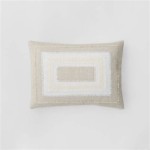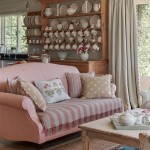Gen Z Home Decor Trends: Shaping Spaces with Individuality and Sustainability
Generation Z, born roughly between 1997 and 2012, is rapidly influencing numerous aspects of society, and home decor is no exception. As they move into adulthood and establish their own living spaces, Gen Z is bringing a fresh perspective to interior design, prioritizing individuality, sustainability, and affordability. Their preferences are driven by a digital-native mindset, a strong sense of social consciousness, and a desire to create spaces that reflect their unique personalities and values. This article will explore the key trends shaping Gen Z home decor choices, offering insights into their design philosophies and practical applications.
Embracing Eclecticism and Maximalism
One of the defining characteristics of Gen Z home decor is its departure from traditional minimalist aesthetics. While minimalism has had its moment, Gen Z is embracing eclecticism and maximalism, creating spaces that are visually rich and deeply personal. This trend involves mixing and matching different styles, eras, and textures to create a unique and layered look. Think vintage furniture paired with contemporary art, bold colors juxtaposed with muted tones, and an abundance of plants and decorative objects.
The driving force behind this embrace of eclecticism is a desire for self-expression. Gen Z values authenticity and individuality, and their living spaces serve as a canvas to showcase their personal stories and interests. They are not afraid to experiment with different styles and to incorporate elements that reflect their hobbies, passions, and cultural backgrounds. This approach results in homes that are not only aesthetically pleasing but also deeply meaningful.
Maximalism, in particular, allows Gen Z to curate collections of objects that resonate with them. This can include anything from travel souvenirs and vintage finds to handmade crafts and graphic art prints. The key to successful maximalism is to create a sense of cohesion by using color palettes, textures, and themes to tie the various elements together. Rather than simply accumulating clutter, Gen Z maximalists curate their spaces with intention, creating a sense of visual interest and personal narrative.
Furthermore, the eclectic and maximalist approach aligns with Gen Z's commitment to sustainability. By incorporating vintage and secondhand items, they are reducing their environmental impact and giving new life to pre-owned pieces. This repurposing of furniture and decor contributes to a more circular economy and reduces the demand for new products.
Examples of this trend in practice include walls adorned with gallery walls comprised of diverse art styles, collections of vintage trinkets displayed on shelves, and rooms filled with a mix of colorful textiles and patterns. The focus is on creating a space that feels lived-in, authentic, and reflective of the individual's unique personality.
Prioritizing Sustainability and Ethical Consumption
Sustainability is a core value for Gen Z, and this principle extends to their home decor choices. They are actively seeking out eco-friendly and ethically sourced products, opting for materials, brands, and practices that minimize their environmental footprint. This commitment to sustainability is driven by a deep awareness of climate change and a desire to create a more responsible and equitable world.
Several factors contribute to Gen Z's focus on sustainable home decor. Firstly, they are highly informed consumers, readily researching the environmental impact of the products they purchase. They are skeptical of greenwashing and actively seek out brands that are transparent about their manufacturing processes and supply chains. Secondly, they are accustomed to sharing information and holding companies accountable through social media, making it easier to identify and support businesses that align with their values.
In terms of specific material choices, Gen Z prioritizes natural and renewable resources. This includes furniture made from reclaimed wood, textiles crafted from organic cotton or bamboo, and decor items made from recycled materials. They are also drawn to products that are locally made, supporting local artisans and reducing transportation emissions.
Beyond material choices, Gen Z is also mindful of the overall lifecycle of their home furnishings. They are more likely to invest in durable, high-quality pieces that will last for years, rather than disposable items that end up in landfills. They also embrace DIY projects and upcycling, transforming old items into something new and useful. Thrift stores and online marketplaces are popular destinations for finding unique and affordable sustainable decor options.
Examples of sustainable decor choices include choosing furniture made from FSC-certified wood, using low-VOC paints, incorporating houseplants to improve air quality, and opting for energy-efficient lighting. Gen Z is also drawn to minimalist designs that prioritize functionality and reduce unnecessary consumption.
Ultimately, Gen Z views sustainability not just as a trend but as a fundamental aspect of responsible living. Their commitment to eco-friendly decor is shaping the future of the industry, encouraging brands to adopt more sustainable practices and creating a demand for products that are both beautiful and environmentally responsible.
Integrating Technology and Functionality
As digital natives, Gen Z seamlessly integrates technology into their homes, prioritizing functionality and convenience. Smart home devices, automated systems, and tech-integrated furniture are becoming increasingly common in Gen Z living spaces. This integration is driven by a desire for efficiency, personalization, and enhanced control over their home environments.
Smart home technology plays a significant role in Gen Z's approach to home decor. Smart lighting systems allow them to adjust the ambiance of their rooms with the touch of a button, creating customized lighting schemes for different activities. Smart thermostats help them optimize energy consumption and reduce utility bills. Smart speakers provide hands-free control over various functions, such as playing music, setting alarms, and controlling other smart devices.
Beyond smart home devices, Gen Z is also drawn to tech-integrated furniture. This includes items such as sofas with built-in charging ports, desks with integrated cable management systems, and beds with adjustable frames. These features enhance the functionality of the furniture and cater to the needs of a digitally connected lifestyle.
Furthermore, technology is also influencing the way Gen Z shops for home decor. Online marketplaces and virtual reality tools allow them to visualize furniture and decor items in their homes before making a purchase. Social media platforms provide inspiration and a sense of community, allowing them to share design ideas and discover new trends.
The integration of technology is not just about convenience; it is also about creating a more personalized and immersive living experience. Gen Z values the ability to customize their environments to suit their individual needs and preferences. Technology enables them to create spaces that are not only functional but also aesthetically pleasing and reflective of their personal style.
This focus on functionality also extends to space-saving solutions, which are particularly important for Gen Z living in urban areas or smaller apartments. Multifunctional furniture, such as sofa beds and expandable tables, are popular choices. Vertical storage solutions, such as shelving units and wall-mounted organizers, help maximize space and minimize clutter.
Best And Worst Home Trends According To Gen Z Interior Designer Business Insider
Gen Z Home Decor Trends To Skip According Interior Decorator Business Insider

5 Home Trends Young Consumers Are Loving This Year Ypulse

5 Gen Z Approved Home Decor Trends Trending Apartment Inspiration

Make Way For Maximalism Gen Z Says Less Is A Bore Archdaily

Make Way For Maximalism Gen Z Says Less Is A Bore Archdaily

Home Decor Tips How To Revamp Your Space With Colourful Gen Z Aesthetics

Make Way For Maximalism Gen Z Says Less Is A Bore Archdaily

Generation Z Inspired Interior Design Trends To Uplift Your Home Decor
Gen Z Home Decor Trends To Skip According Interior Decorator Business Insider
Related Posts







